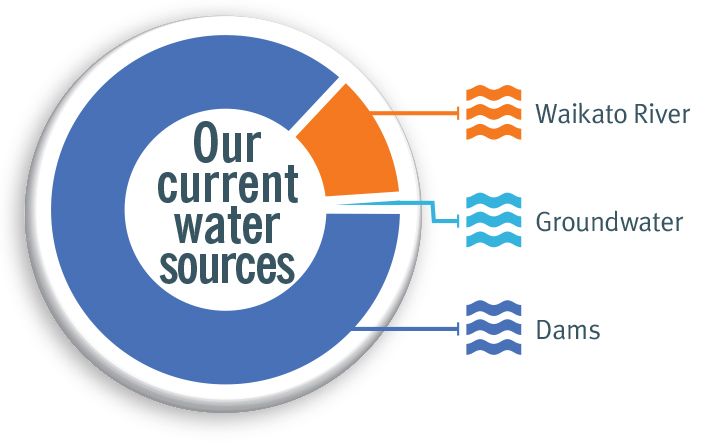Te hōhonu o ngā pāpuni o Tāmaki Makaurau
Auckland dam levels
The volume of water stored in our dams rises and falls throughout the year.
Where does your water come from?
In the week finishing 7 December, the proportion of water taken from each of the following sources to supply the metropolitan Auckland area was:
- Dams = 87.30%
- Waikato River = 11.96%
- Groundwater = 1.01%

How full are the dams?
Most of Auckland's drinking water comes from 10 dams in the Hūnua and Waitākere ranges.
- Historical average is based on data from the past three years
Total water storage by dam
How individual dams make up the total storage. Tap or hover to see how full each dam is.
Size of our dams
Some of our dams are much larger than the others.
- One gigalitre is equal to one billion litres of water.